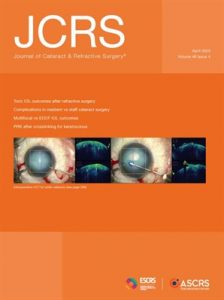JCRS Highlights April 2020
April 2020 - Volume 46 - Issue 4

Thomas Kohnen
Published: Saturday, June 6, 2020
 Journal Of Cataract And Refractive Surgery
Journal Of Cataract And Refractive SurgeryApril 2020 - Volume 46 - Issue 4

Published: Saturday, June 6, 2020
 Journal Of Cataract And Refractive Surgery
Journal Of Cataract And Refractive Surgery